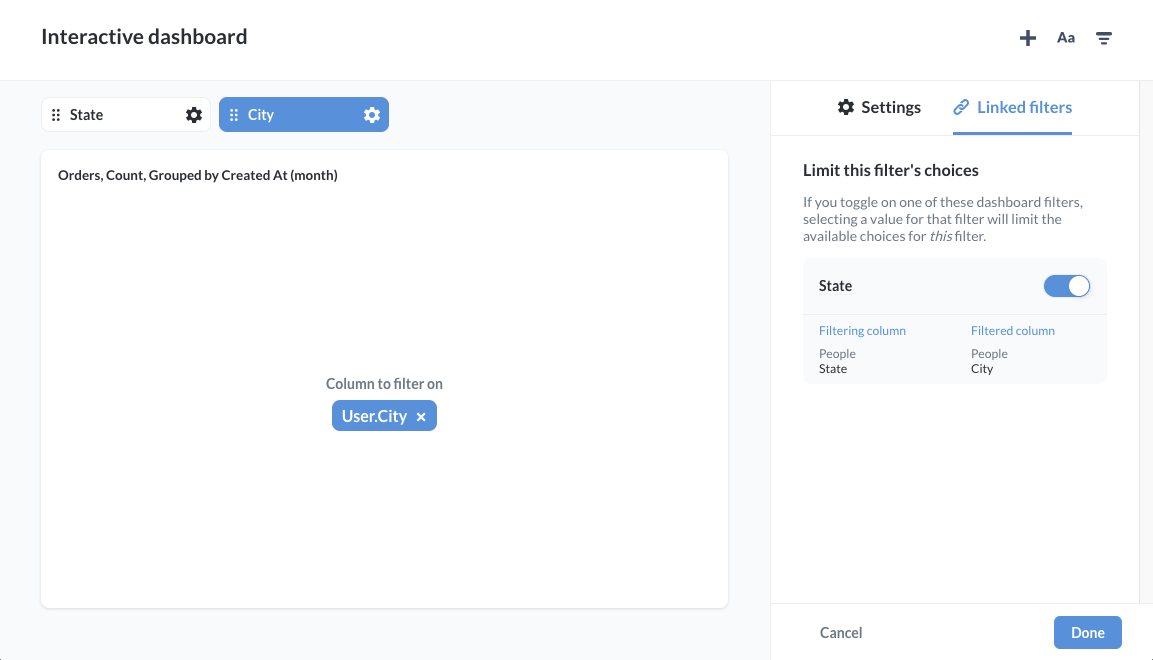

With full-app embedding, people can create their own questions, dashboards, models, and more, all in their own data sandbox. When to use full-app embedding: when you want to offer multi-tenant, self-service analytics. There are three ways to embed Metabase in your app:įull-app embedding is the only kind of embedding that integrates with SSO and data permissions to enable true self-service access to the underlying data.

First, we need to import exportVisual method from exportPDF from and saveAs from We also need to import useRef hook as we need to get access to the instance of the component.You can embed Metabase tables, charts, and dashboards-even Metabase’s query builder-in your website or application.
#Metabase embed graps install#
With npm npm install Yarn yarn add next step is to update the Bar.js file. We can add export functionality by taking advantage of kendo-drawing and kendo-file-saver packages.
#Metabase embed graps pdf#
Let’s have a look at how we can add an export PDF functionality. This can be very useful if you want to allow users to create reports with charts. What’s more, it’s also possible to export KendoReact graphs to different formats such as image or PDF. Src/App.js import import "hammerjs" import "./App.css" function App ( ) First, replace the contents of App.js and App.css files. Finally, we need to install Hammer.js, an open-source library for recognizing gestures made by touch, mouse and pointer events.Īfter installing new dependencies, let’s clean up the project. KendoReact also offers Default (created by the team’s internal UX experts) and Bootstrap themes, but you can easily customize them or even build your own. For this example, we will use the Material theme. The first package is kendo-react-charts library, which contains a variety of chart components for React. With Yarn yarn add /kendo -react -charts /kendo -theme -material hammerjs npx create -react -app kendo -react -graphsĪfter the project is scaffolded, we need to install a few packages to use the KendoReact charts library. You can do so by running the command below in your terminal. As part of a complete React UI components library, where this data visualization library really shines is its integration with the 90+ components within KendoReact, enabling developers to implement consistent styling and sleek design across an entire project.īefore we dive into implementation of our React graphs, let’s scaffold a new React project using Create React App. We’re going with the React graph library that is part of KendoReact, as it is feature-rich and highly customizable.

This article will demonstrate an efficient approach to creating React graphs by using the KendoReact Charts library, and we will implement Donut, Bar, Line and Sparkline graphs. One of the best ways to show data in a nice and easy to understand way is to visualize it using graphs (charts). Web applications often have to help the end user make sense of different kinds of data.
#Metabase embed graps how to#
Read on to see how to quickly implement Donut, Bar, Line and Sparkline charts with a library that provides a solid foundation for more than just the data visualization elements of your React app. Let’s explore an efficient way to create React graphs with the KendoReact Charts library.


 0 kommentar(er)
0 kommentar(er)
